Back in July, outgoing Infrastructure Australia (IA) CEO, Philip Davies, warn that Australia’s infrastructure provision is failing badly in the face of strong immigration-fuelled population growth:
Mr Davies said if planning for major projects did not change at all levels of government, the major capitals would not cope with the population growth.
“An additional 11.8 million people will call Australia home in the next 30 years, with the bulk of this growth occurring in our largest cities — Sydney, Melbourne, Brisbane and Perth,” Mr Davies said.
“The reality is, if we don’t improve the way we plan and deliver our infrastructure, we won’t cope with this growth and our cities will be characterised by congestion and constraint.
…When asked if he could cite a project that had stacked up to the 11 principles outlined in the document to be published today, Mr Davies said to date there had been none that had adhered to the best-practice model.
Mr Davies’ warning was followed shortly after by similar warnings from Australian Chamber of Commerce and Industry CEO, James Pearson, as well as the Grattan Institute’s Transport Fellow, Hugh Batrouney.
Yesterday, IA’s acting CEO, Anna Chau, rubbished a new plan aimed at making dud projects even easier to justify. From The Canberra Times:
A six-month inquiry by Parliament’s standing committee on infrastructure this week recommended reducing the discount rate on infrastructure investment from 7 to 4 per cent, effectively adding millions of dollars in future value to projects that would otherwise be considered of marginal value.
The move would have a significant impact on the cost-benefit analysis of future projects – such as Sydney’s light rail or Melbourne’s airport link – opening the door to a wider array of approvals as infrastructure struggles to keep up with a population that will double by 2075.
Infrastructure Australia’s acting chief executive Anna Chau said reducing the discount rate to 4 per cent would be a form of “intergenerational theft”.
“We wouldn’t do this for kids in our schools, just as we wouldn’t lower the standards in our hospitals, so why should we do it for our major infrastructure projects?” she said.
“Lowering the discount rate… won’t make this process any more rigorous,” said Ms Chau.
“It’s like lowering the passing grade from 50 per cent to 25 per cent”.
A swathe of announcements are expected in the lead up to the next federal election due before May next year, raising the prospect expensive but worthy projects will be cast aside in favour of pork barrelling in key electorates.
“There is always a desire to lower the pass mark,” said Ms Chau…
Let’s be honest: politicians (both state and federal) already get plenty of dud projects funded with the discount rate at 7%. So lowering it to 4% probably won’t make that much difference. They’ll act unethically either way.
The bigger issue is that Australia cannot possibly build its way out of the projected mass immigration-fuelled population growth, which will add a Canberra’s-worth of people every year for decades:
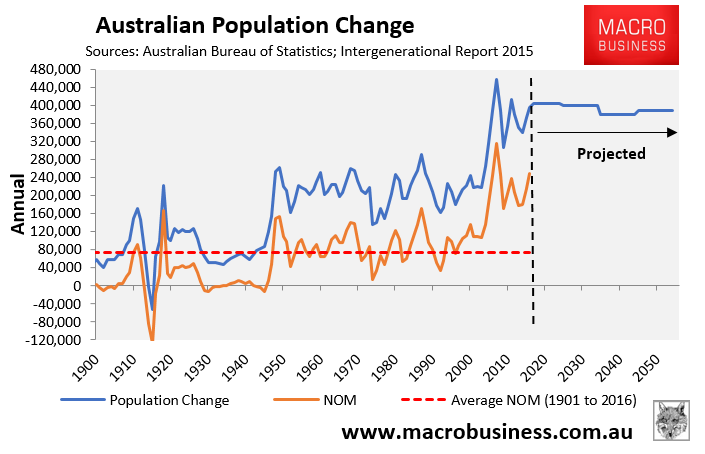
With Sydney and Melbourne growing to more than 8 million people by 2060, and Brisbane and Perth growing to more than 5 million and 4 million people respectively:
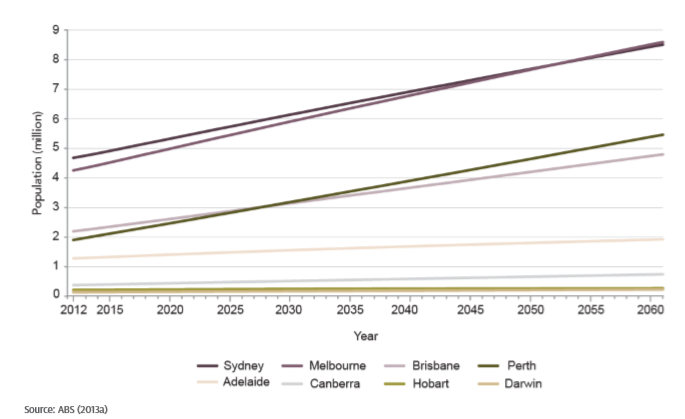
The reasoning is simple: in already built-out cities, the cost of retrofitting new infrastructure to accommodate greater population densities is prohibitively expensive because of the need for land buy-backs, tunnelling, as well as disruptions to existing infrastructure.
Bernard Salt explicitly highlighted this point in an article earlier this month:
Demographer Bernard Salt says… we need to be world’s best practice at city planning and Western car-based city infrastructure delivery. And if we are not then our cities will collapse under their own weight”…
As Salt points out, subway construction is jaw-droppingly expensive. The new 11km Metro tunnel to “untangle” the existing City Loop rail link works out at $1m a metre, 10 times the cost of line construction above ground. “They are extraordinary numbers, and that’s why this is the big issue,” he says…
The Productivity Commission (PC) has also repeatedly warned on the massive and expensive infrastructure requirement if Australia is to keep pace with manic population growth.
The PC’s 2013 report warned that total private and public investment requirements over the next half century are estimated to be 5-times the cumulative investment made over the last half century:
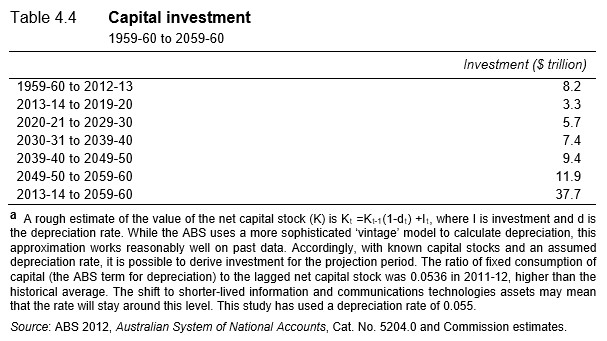
The PC’s 2016 Migrant Intake into Australia report explicitly noted that the infrastructure required to accommodate a bigger population will necessarily be very expensive, with costs borne by the existing population:
Physical constraints in major cities make the costs of expanding infrastructure more expensive, so even if a user-pays model is adopted, a higher population is very likely to impose a higher cost of living for people already residing in these major cities.
…governments have not demonstrated a high degree of competence in infrastructure planning and investment. Funding will inevitably be borne by the Australian community either through user-pays fees or general taxation…
Whereas, the PC’s recent Shifting the Dial: 5 year productivity review explicitly noted that infrastructure costs will inevitably balloon due to our cities’ rapidly growing populations:
Growing populations will place pressure on already strained transport systems… Yet available choices for new investments are constrained by the increasingly limited availability of unutilised land. Costs of new transport structures have risen accordingly, with new developments (for example WestConnex) requiring land reclamation, costly compensation arrangements, or otherwise more expensive alternatives (such as tunnels).
We also cannot forget Infrastructure Australia’s recent report, which found that both Melbourne’s and Sydney’s living standards will be crushed as their populations surge to 7.3 million and 7.4 million by 2046, regardless of how they grow, with worsening congestion and reduced access to jobs, hospitals, schools and green space:
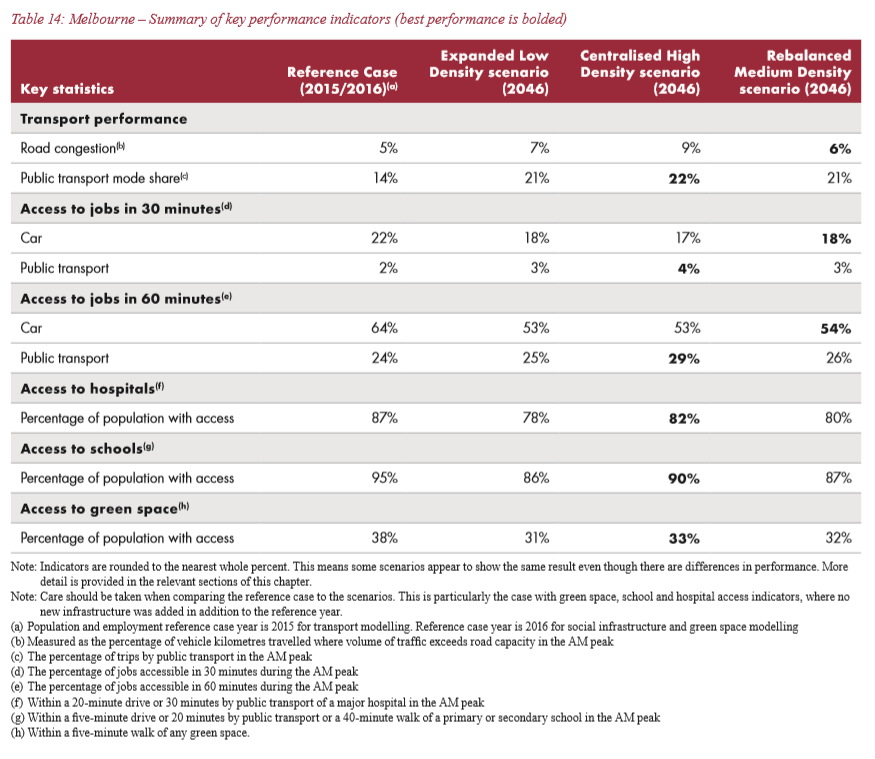
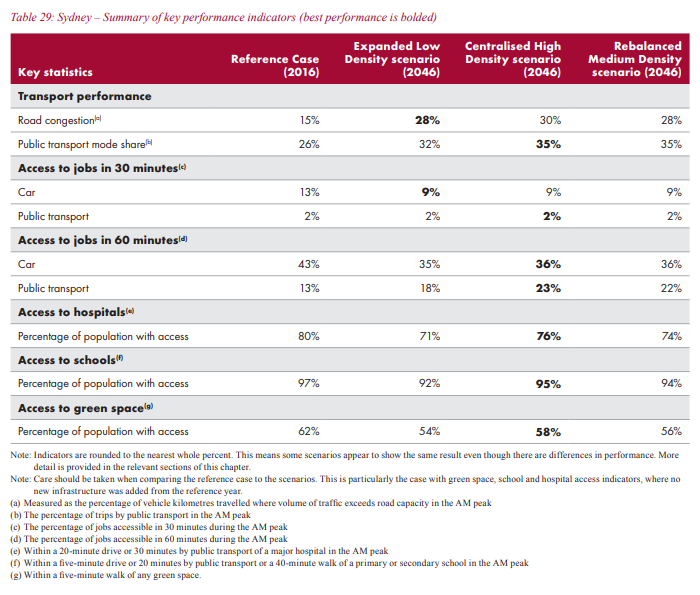
Clearly, it is the federal government that carries the primary blame for Australia’s infrastructure woes arising from rapid population growth, as it has set our mass immigration ‘Big Australia’ policy.
The most obvious and least cost policy solution to mitigate Australia’s infrastructure woes is to significantly dial back Australia’s immigration program and forestall the need for costly new infrastructure projects in the first place.
Prevention is always better than trying to find a cure. And Australia cannot possibly build its way out of this mess.

